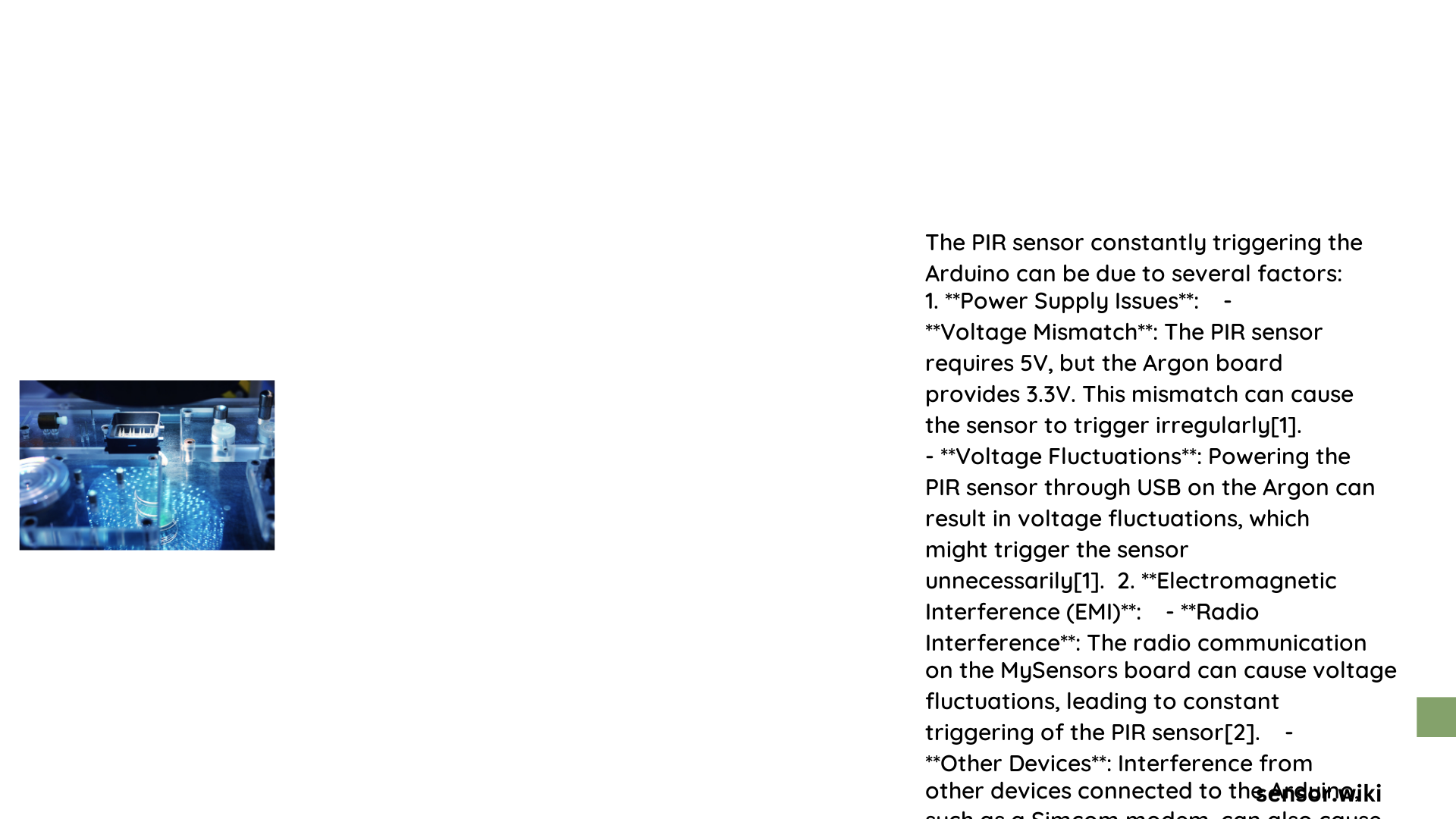PIR sensors are critical components in motion detection projects, but when they start constantly triggering on an Arduino, they can become a significant source of frustration for developers and hobbyists. Understanding the root causes of persistent false triggers involves examining multiple technical factors including electrical noise, power supply instability, environmental conditions, and sensor configuration. This comprehensive guide will walk you through systematic diagnostic and resolution strategies to restore your PIR sensor’s reliable performance.
What Causes PIR Sensor to Trigger Constantly?
Power Supply Instability: A Primary Culprit
PIR sensors are extremely sensitive electronic components that require stable voltage. Fluctuations as minor as 0.1V can cause unexpected behavior. Consider these critical factors:
| Power Supply Issue | Potential Impact | Recommended Solution |
|---|---|---|
| Voltage Fluctuation | Continuous False Triggers | Use Dedicated Voltage Regulator |
| Shared Power Source | Electrical Noise | Separate Power Circuits |
| Inadequate Filtering | Signal Interference | Add Decoupling Capacitors |
Electrical Noise Mitigation Strategies
- Implement Filtering Techniques
- Use 10µF electrolytic capacitors near sensor power pins
- Add 0.1µF ceramic capacitors for high-frequency noise reduction
-
Install ferrite beads on power lines
-
Grounding Considerations
- Ensure proper ground connection
- Use star grounding technique
- Minimize ground loop potential
How to Diagnose Sensor Malfunction?
Systematic Troubleshooting Approach
When confronting constant PIR sensor triggering, follow this methodical diagnostic process:
- Isolate the PIR sensor from other circuit components
- Verify power supply stability using multimeter
- Check sensor’s sensitivity potentiometer settings
- Examine physical sensor placement and environmental conditions
- Test sensor independently with minimal circuit complexity
What Are Environmental Interference Factors?
Environmental conditions significantly impact PIR sensor performance:
- Temperature Variations: Extreme ambient temperatures can cause erratic behavior
- Humidity Levels: High humidity might introduce unexpected electrical characteristics
- Reflective Surfaces: Metallic or glass surfaces can create false motion detection
- Airflow Patterns: HVAC systems or fans might trigger sensor unexpectedly
How to Calibrate PIR Sensor Sensitivity?
Precise Adjustment Techniques
- Hardware Calibration
- Locate sensitivity adjustment potentiometer
- Gradually reduce sensitivity from maximum setting
-
Find optimal middle-range configuration
-
Software-Based Calibration
“`cpp
// Sample Arduino Debounce Code
const int SENSOR_PIN = 2;
unsigned long lastTriggerTime = 0;
const unsigned long DEBOUNCE_DELAY = 3000; // 3 seconds
void setup() {
pinMode(SENSOR_PIN, INPUT);
}
void loop() {
if (digitalRead(SENSOR_PIN) == HIGH) {
if (millis() – lastTriggerTime > DEBOUNCE_DELAY) {
// Valid motion detection logic
lastTriggerTime = millis();
}
}
}
“`
Advanced Troubleshooting Techniques
- Use oscilloscope to analyze signal characteristics
- Implement digital filtering in code
- Consider replacing sensor if persistent issues remain
Recommended Hardware Configurations
- Use voltage regulators like LM7805
- Implement RC filtering networks
- Select high-quality PIR modules from reputable manufacturers
Conclusion

Resolving PIR sensor constant triggering requires a holistic approach combining hardware diagnostics, precise calibration, and strategic software implementation.
